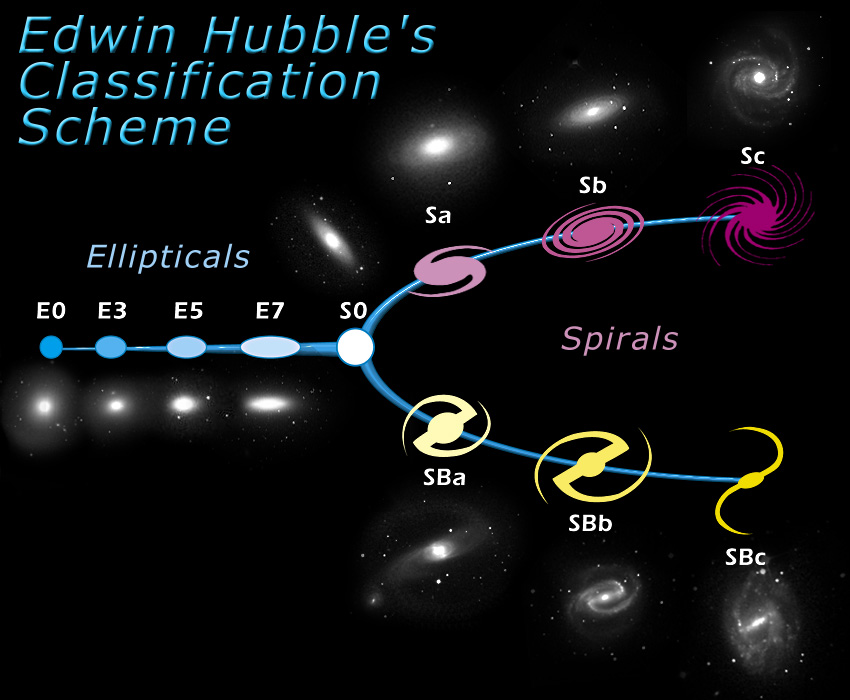In the early 1900s, Edwin Hubble looked at galaxies like the ones you saw in the last few pages. Hubble classified the galaxies using a “tuning fork” system. The elliptical galaxies made up the fork’s handle, and spiral galaxies and barred spiral galaxies make the fork’s prongs. So his classification system looked like this:

Hubble believed that galaxies started at the left end of the tuning fork when they were young, and moved toward the right as they aged. Therefore, he called elliptical galaxies “early galaxies” and spiral galaxies “late galaxies”.We now know he was mistaken in this belief. Spiral galaxies have a great deal of rotation and elliptical galaxies do not. There is no way an elliptical galaxy could spontaneously begin rotating, so elliptical galaxies cannot turn into spiral galaxies. Although Hubble was wrong about his theory of galaxy evolution, the confusing names have stuck: today, elliptical galaxies are still referred to as early galaxies and spirals as late galaxies.
|
Run |
Camcol |
Field |
|---|---|---|
|
752 |
1 |
|
|
2662 |
4 |
|
|
752 |
1 |
|
|
1737 |
6 |
|
|
756 |
4 |
|
|
2738 |
2 |
|
|
752 |
1 |
|
|
3325 |
3 |
|
|
3325 |
3 |
|
|
3325 |
2 |
|
|
3325 |
2 |
215 (just left of center) |
|
3325 |
3 |
230 (2 galaxies) |
|
2738 |
3 |
122 (2 nice galaxies) |
|
3325 |
3 |
|
|
3325 |
1 |
|
|
3325 |
1 |
Question 4. Compare and contrast your classification system to Hubble’s. How are they similar? How are they different?
